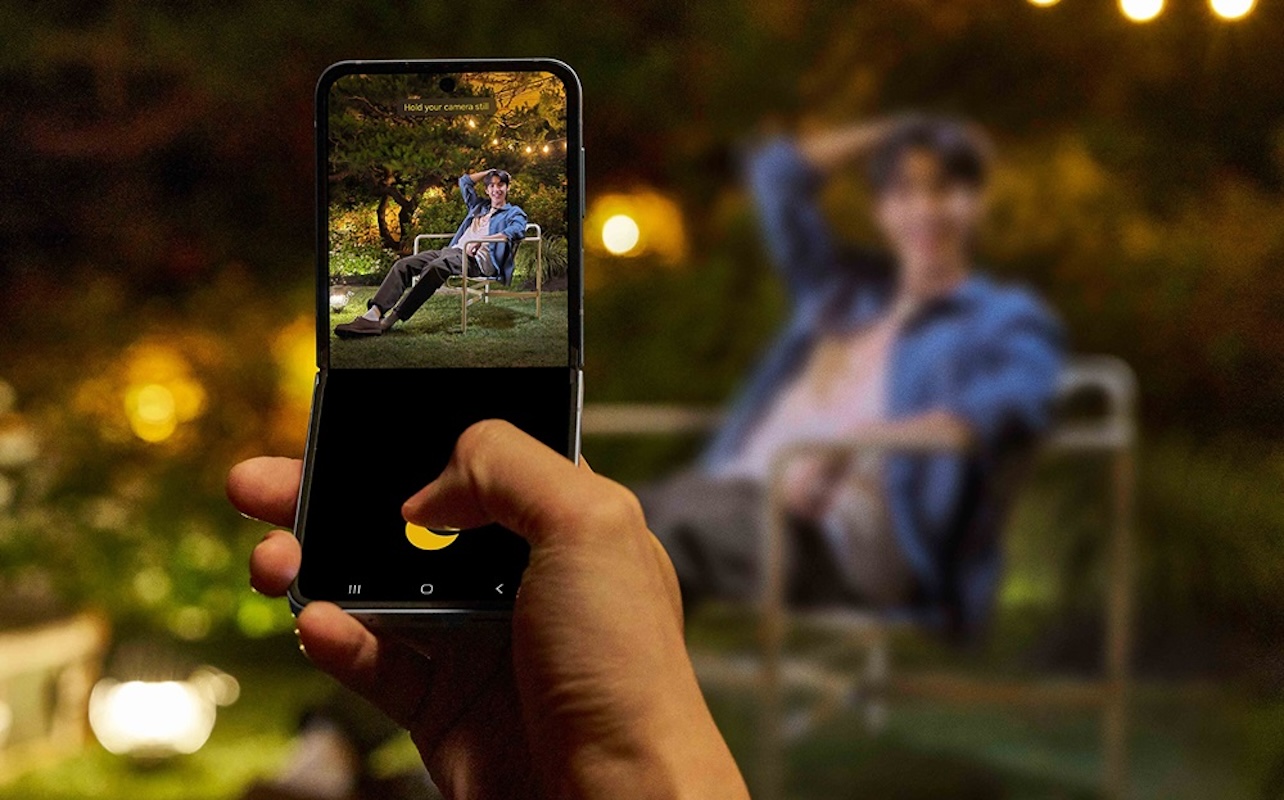
Your camera choice matters when you’re posting daily vlogs on YouTube, making vertical videos go viral, or building a blog packed with stunning visuals. While mirrorless cameras and DSLRs were once the undisputed kings of content creation, more and more creators today are reaching for their smartphones. But that doesn’t mean DSLRs are obsolete. Choosing between a DSLR camera vs phone camera can significantly impact the quality of your visuals, how flexible your workflow is, and even how quickly you can publish your work.
So, which is better suited for different types of creators? Let’s break it down, from pixels to portability, so you can pick the right gear for your style, budget, and workflow.
Key differences between a DSLR camera and a phone camera
If you’re stuck in the DSLR vs cell phone camera debate, you’re not alone. Both camera types have come a long way, and they each come with their own pros and cons. We’ll break down the major factors that matter most to content creators—from image quality to editing workflow—so you can decide which one aligns best with your goals.
Image quality and sensor performance
When it comes to lighting conditions, DSLRs generally outperform smartphones. They typically feature larger sensors, which means they capture more light. More light equals better resolution, finer detail, and more control over depth of field (that nice, blurry background effect). Even in low light or high-contrast environments, DSLR cameras deliver richer detail, cleaner shadows, and more accurate highlights without as much noise.
Smartphones, on the other hand, rely heavily on computational photography. Their sensors are smaller, but they use software and AI to make your photos look better. They automatically adjust exposure, enhance colours, and sharpen details of images after they’re captured. These tweaks are immediate and automatic, but they can sometimes result in photos that look grainy or over-processed. Although smartphones have come a long way with night modes and HDR, they still can’t quite match the power of a stabilized DSLR sensor.
DSLRs can capture images in RAW format, giving you complete flexibility in post-processing (although some smartphones now can shoot in RAW format). That sunset shot you took in Banff? A DSLR can let you tweak small details—from the pinks in the sky to the shadows in the trees—without compromising quality thanks to their larger sensors and image files. Smartphones have come a long way in this area, though images can vary depending on the brand’s image processing style and file size. When it comes to consistent colour accuracy, natural bokeh (blurred background), and detail preservation, DSLRs still have the edge.
Video quality and filmmaking capabilities
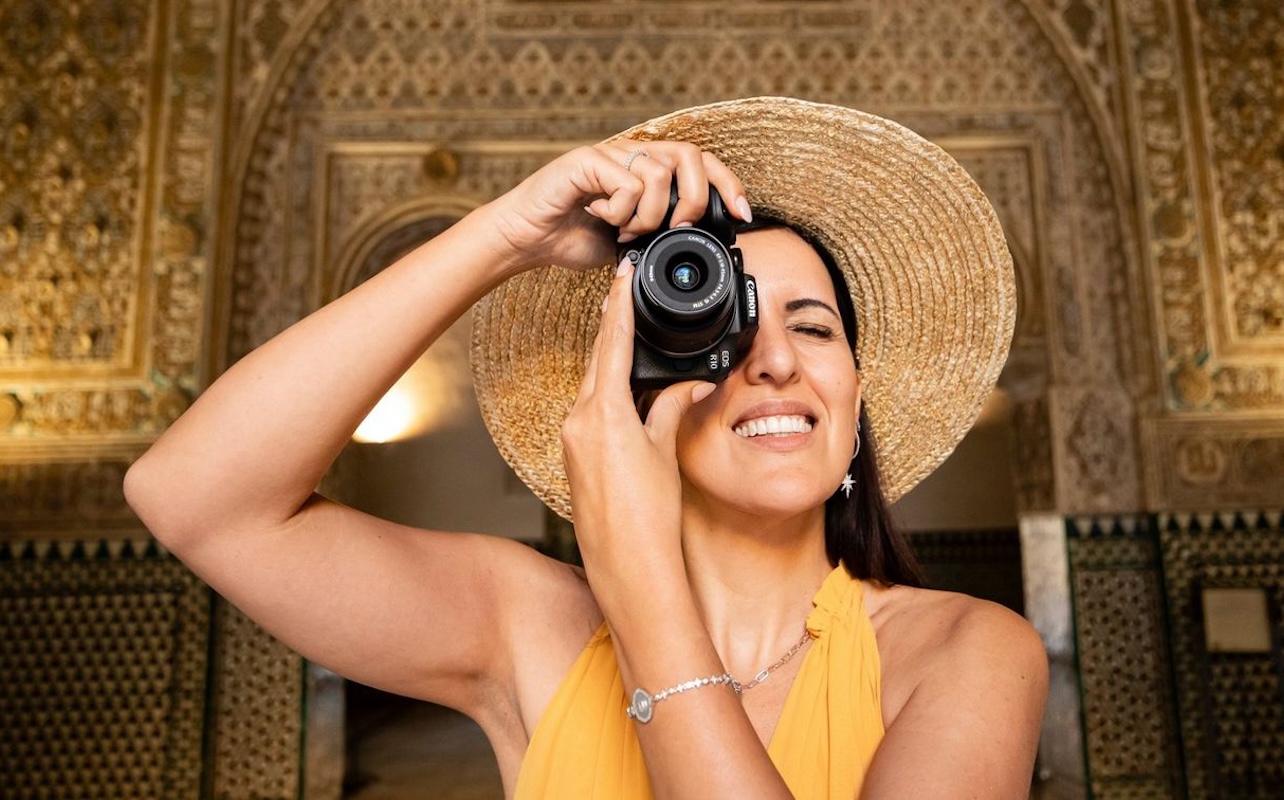
DSLRs offer robust video settings, including full 4K or even 8K recording, high frame rates for smooth slow motion, and manual control over white balance, shutter speed, and other settings. Some DSLR models also support log formats for better colour grading in post. Smartphones are catching up fast. Most flagship models of smartphones now offer 4K and 8K video, built-in stabilization, cinematic modes, and the ability to shoot in HDR. For casual creators or vloggers, those tools are more than enough to get polished footage, and for higher-quality productions, smartphones can get a leg up with smartphone accessories like tripods and gimbals.
When it comes to sound quality, DSLRs usually take the win. They’re designed to support external microphones and other audio gear that elevate your sound quality—crucial for interviews, voice-overs, or professional work. Smartphones can use external mics too, but compatibility, availability, and control are more limited. Many DSLRs have hardware features built specifically for use with external accessories while smartphones do not.
As for editing flexibility, DSLRs offer more post-production control. Want to colour grade your footage using LUTs (Lookup Tables)? A DSLR will more easily give you that pro-level finish. For creators who want the best sound quality, DSLRs support a wide range of external audio gear, which means no more muffled audio or background noise drowning out your voice. That said, smartphones are also evolving—some now allow shooting in ProRes or RAW video formats and offer apps that bring pro-level editing tools right to your phone.
Portability and usability
Let’s face it: DSLRs are bulky. Carrying one around while hiking up Vancouver’s Grouse Mountain, for example, isn’t exactly convenient. Once you factor in a few lenses and accessories, you’re basically a walking camera bag. But that extra gear comes with perks. DSLRs often have dedicated controls for settings and offer a shooting experience that feels deliberate and professional.
Smartphones win in the portability department, hands down. They’re unbeatable for spontaneous content. They slip into your pocket and are ready to shoot in seconds. Want to go live on Instagram, shoot a quick story, or capture a candid moment? Just pull out your phone and go; no need for a secondary setup or an additional bag.
Battery life and storage are another consideration. DSLRs usually have swappable batteries and SD cards. Smartphones require frequent charging and managing subscription-based cloud storage.
Creative control and expandability
This is where DSLRs really stretch their legs. Want to switch lenses for a dramatic wide shot or dreamy close-up? DSLRs let you choose from a wide range of professional lenses. You also get full manual controls over ISO, shutter speed, aperture, and white balance. Using a DSLR is like driving stick shift: more work, but also more control.
Smartphones offer a different kind of creative toolkit. You can shoot in Pro Mode on some models, access different pre-capture filters and presets, and use powerful camera apps like Filmic Pro to use your camera in manual mode. You can also pair your smartphone with gimbals, tripods, and clip-on lenses for versatility, and apply the same photography principles you’d use with a DSLR to really up your smartphone photography game.
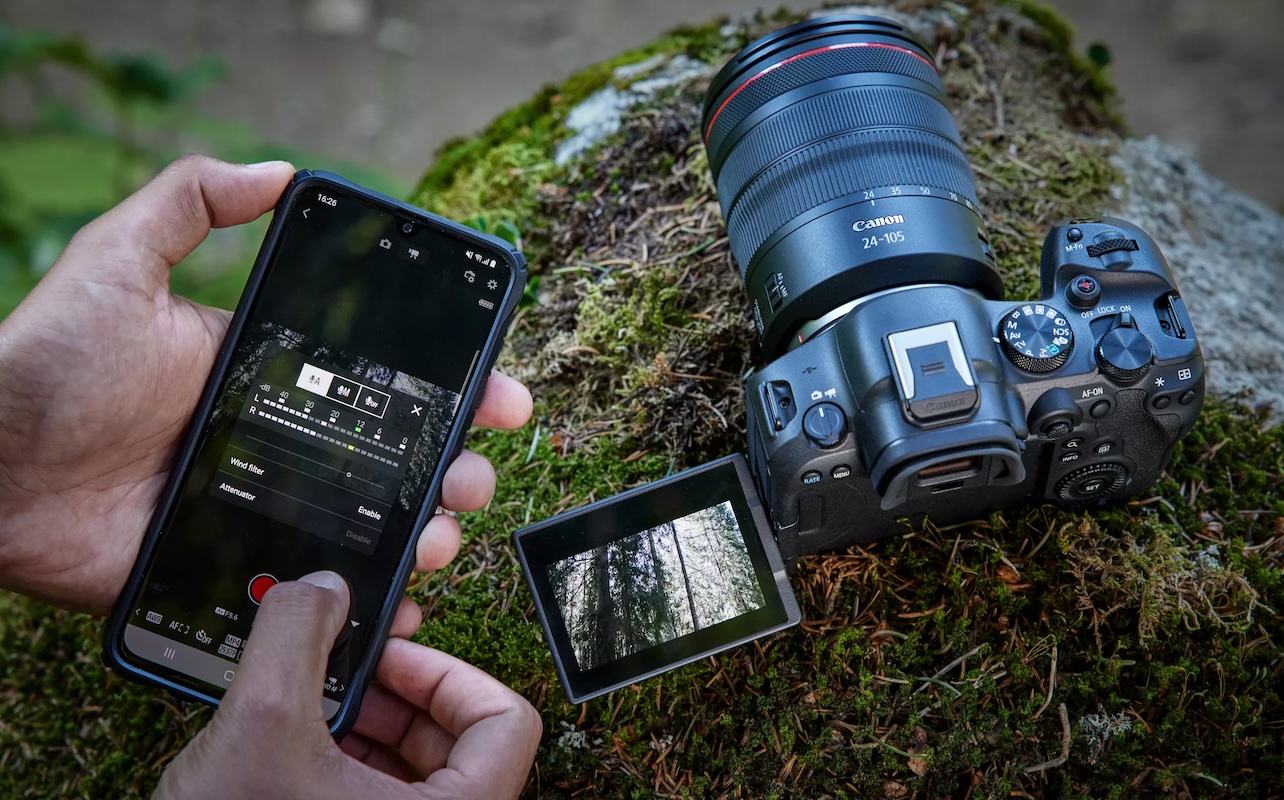
There are also hybrid tools that blend the two. For instance, you can use your phone as a remote monitor or shutter for your DSLR—a handy setup for solo shoots.
However, the learning curve of using your camera is a huge consideration. DSLRs reward you with incredible creative range, but they require time and patience to master. If you’re starting your content creation journey right as you buy your camera, your initial image quality could be better with a smartphone than a DSLR. Smartphones are intuitive, making them perfect for creators who want speed without the steep learning curve.
Editing and publishing workflow
Editing and publishing your images or videos depend on your personal workflow style. Some creators love the speed and efficiency of a smartphone—you shoot, trim, slap on a filter, and post, all within minutes. It’s a fast, frictionless process that’s ideal for short-form content or on-the-go updates.
Others enjoy the craft of the process—transferring files to a computer, carefully editing in software like Adobe Lightroom or Premiere Pro, and fine-tuning every frame. DSLRs cater to this type of creator, offering high-quality footage and images that hold up to serious editing. It takes longer and requires a computer (with a good monitor of its own), but the results are often more polished and professional.
If you value immediacy and simplicity, go with your phone. If you love building a story in post, the DSLR’s workflow might be more satisfying.
Cost, upgrades, and long-term value of DSLR vs phone cameras
The cost of content creation gear can vary wildly. A new smartphone with a great camera will run you roughly $1,000-2,000 CAD. But that also gives you a phone, internet device, and editing studio in your pocket. Entry-level DSLRs start around $800 but a professional DSLR body can cost closer to $3,000. With lenses, microphones, tripods, and lighting, you can be looking at a starting kit cost that’s closer to $5,000.
That said, DSLRs tend to hold their value better. Generally, camera bodies resell at a higher percentage of their original cost than a smartphone would (that can also depends heavily on brand, condition, and market trends). And lenses generally retain very strong resale values as well. Smartphones can lose their value quickly with each new release.
For hobbyists or those just starting out, a high-end smartphone may offer the best immediate return on your investment. For professionals aiming to produce professional, commercial-quality work, investing in a DSLR likely makes more sense long-term.
Best camera for different content creators
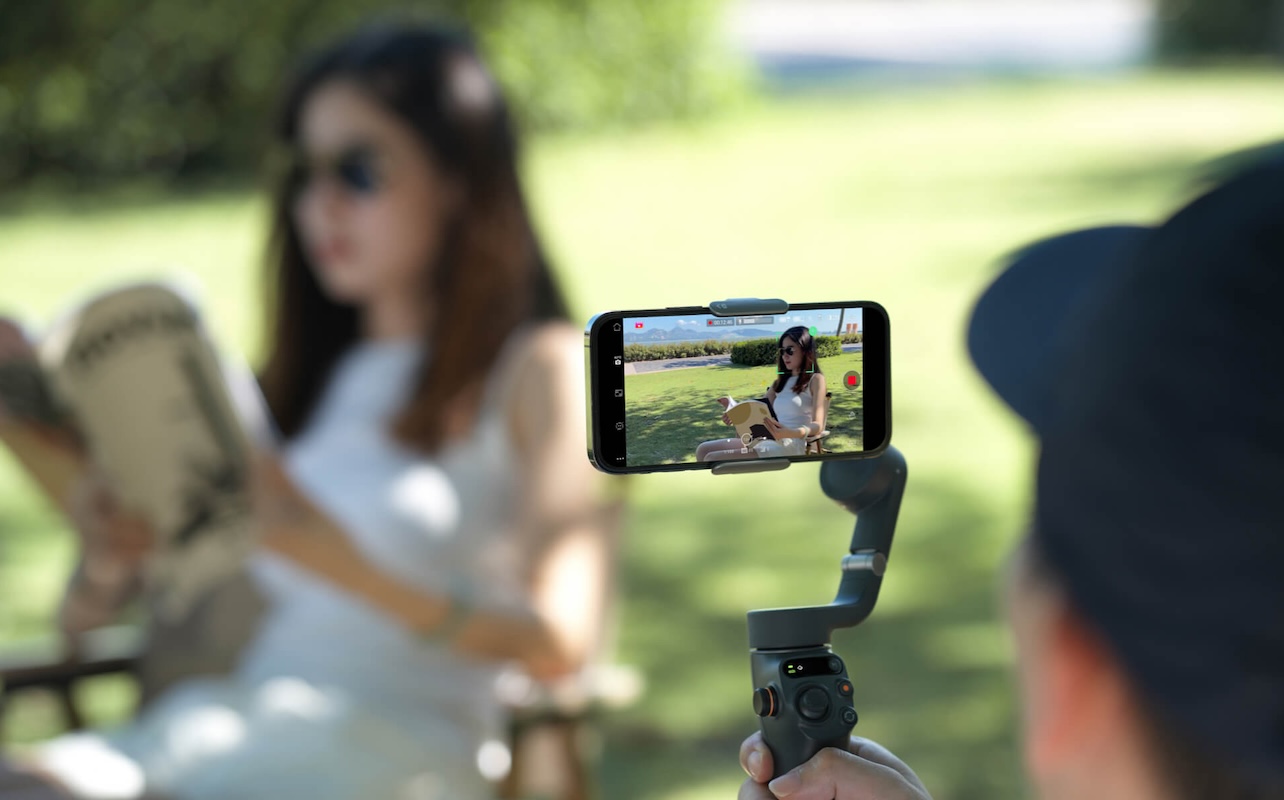
Let’s match camera types with content styles so you can find your best fit.
Choose a DSLR if you:
- Are a photographer, blogger, or filmmaker creating professional content: DSLRs provide unmatched image quality, interchangeable lenses, and manual control. They’re perfect for capturing high-end visuals.
- Shoot documentaries, weddings, macro product videos, or brand campaigns: You’ll need pro-level gear that supports external audio, cinematic footage, and editing in RAW formats—areas where DSLRs excel.
- Need advanced features like interchangeable lenses and audio gear: DSLRs allow you to build a custom rig that matches your specific needs, whether you’re shooting indoors, outdoors, or in a studio setup.
Choose a smartphone if you:
- Are a travel vlogger, food vlogger, or lifestyle influencer on the move: The portability, fast startup time, and ease of sharing make smartphones perfect for capturing moments on the go.
- Want to create and publish quickly from your phone: Smartphones allow for instant shooting, editing, and posting, which is great for social-first creators who thrive on speed and relevance.
- Focus on short-form content like TikToks, reels, or live streams: Smartphones are ideal for these platforms, offering built-in filters, automatic audio sync, and live-streaming features that simplify the content creation process.
Or do both! Many creators use a hybrid setup. You don’t have to choose between a DSLR camera and a phone camera for your whole studio; you can make the decision per shot. Shoot polished YouTube videos on a DSLR, and grab quick behind-the-scenes clips on your phone. This combo gives you the best of both worlds.
Choosing the right camera for your creative journey
There’s no one-size-fits-all answer here. Every content creator has different goals, workflows, and production styles. Some creators crave high-end, cinematic control; others want to document life as it happens. The key is figuring out what matters most to you. If you’re after the highest image quality and a kit that grows with you, a DSLR is a smart long-term investment. If your focus is on speed, convenience, and creating in the moment, your smartphone might already be your best creative ally.
And don’t forget—you don’t have to choose just one. Many creators use both. Shoot your high-production YouTube videos on a DSLR, and capture day-in-the-life Instagram Stories with your phone. Combining both tools lets you keep your content pipeline running smoothly.
Still undecided? Visit Best Buy Canada to explore the latest smartphones and DSLR cameras. Read about each model, compare different features, and find the perfect match for your content creation journey. Because whether you’re shooting with a DSLR or a smartphone, it’s your creativity that makes the magic.
This article was drafted using AI technology and then reviewed, fact-checked, and revised by a member of our editorial team.




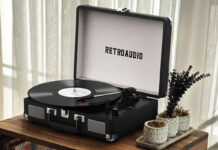

Great comparison! It’s impressive how far phone cameras have come, but DSLRs still offer that unmatched control and image quality professionals need. Both have their place depending on the purpose and skill level.
If you want to make your DSLR or smartphone photos look even better through professional editing or background cleanup, visit
Photo Background Remove (PBR) — we specialize in turning good photos into stunning visuals.